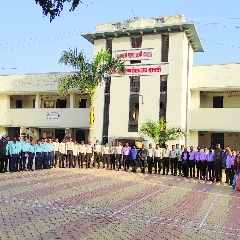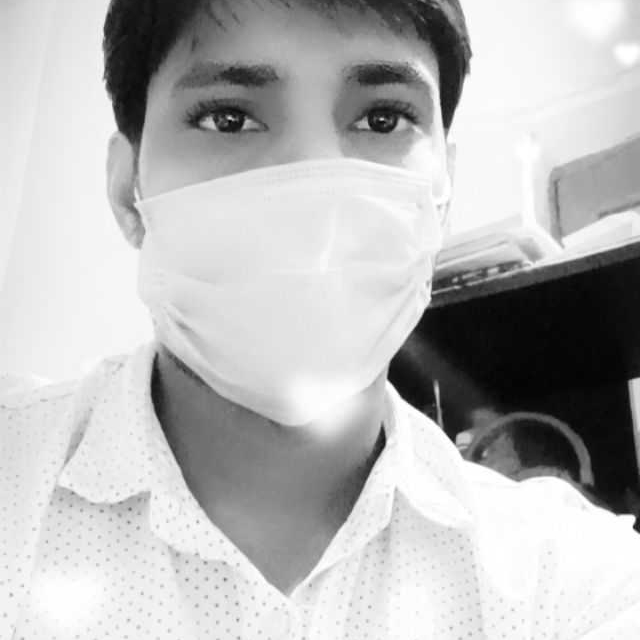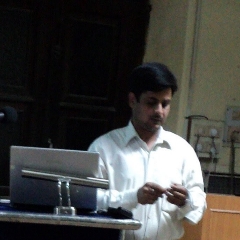Question 2 :
The ratio of rate of loss of heat by a black body at $227^o$C to $127^o$C in a surrounding at $27^o$C is ____________.
Question 3 :
When in thermal contact, the quantity of heat lost by the hotter body is ...... the amount of heat gained by the colder body. (neglect loss of heat due to convection & radiation)
Question 4 :
The radiation of an electric room heater is most effective when it is :
Question 6 :
A body cools from $70$ <br> $^{o}$C to $60$ <br> $^{o}$C in $8$ minute. The same body cools from $60$ <br> $^{o}$C to $50$ <br> $^{o}$C in
Question 7 :
If the temperature of the sun is doubled then the maximum emission wavelength as compared to its initial value will be<br>
Question 8 :
The process by which a solid changes directly into gas is called:
Question 9 :
According to Newton's law of cooling, the rate of cooling is proportional to ${ \left( \Delta \theta \right) }^{ n }$, where $\Delta \theta $ is the temperature difference between the body and the surroundings and $n$ is equal to
Question 10 :
If a liquid is heated in weightlessness, the heat is transmitted through
Question 13 :
For proper ventilation of building, windows must be open near the bottom and top of the walls so as to let pass.
Question 14 :
The process in which rate of transfer of heat is maximum is :
Question 15 :
The surface of a black body is at a temperature ${727}^{o}C$ and its cross section is $1{m}^{2}$. Heat radiated from this surface in one minute in Joules is (Stefan's constant$=5.7\times { 10 }^{ -8 }W/{ m }^{ 2 }/{ k }^{ 2 }$
Question 16 :
A man has a total surface area of $1.5m^2$. Find the total rate of radiation energy from the body :
Question 17 :
Newton's law of cooling holds good only, if the temperature difference between the body and the surroundings is
Question 19 :
A certain amount of heat is required to raise the temperature of x gram of a substance through $t_1^{} C$. The same amount of heat when taken away from y gram of water, it cools through $t_2^{} C$. Therefore, the specific heat of the substance is
Question 20 :
A thin copper wire length L increases its length by 1% heated from temperature $T _ { 1 }$ and $T _ { 2 }$ What is the percentage change in area when a thin copper plate having dimension 2Lx L is heated from $T _ { 1 }$ to $T _ { 2 }$
Question 21 :
By which of the following methods could a cup of hot tea lose heat when placed on metallic table in a class room<br/>a) conduction <br/>b) convection<br/>c) radiation <br/>d) evaporation of liquid.
Question 22 :
On making the temperature of an ideal black body three times, its maximum intensity of radiation will become<br>
Question 23 :
A $50 g$ cube of ice and $500 g$ of boiling water are mixed in an open container. Which of the following is most likely to occur?<br/>
Question 24 :
A copper block of mass 2 kg is heated to temperature of $500^oC$ and then placed in a large block of ice at $0^oC$. What is the maximum amount of ice that can melt? The specific heat of copper is $400 J kg^{-1} {\;}^oC^{-1}$ and latent heat of fusion of water is $3.5\times 10^5 J kg^{-1}$.
Question 25 :
The temperature of a body is doubled but the rate of heat radiation remains same due to change in its surface area. The ratio of initial area to final area is
Question 26 :
The ratio of energies of emitted radiation by a black body at $600\ K$ and $900\ K$, when the surrounding temperature is $300\ K$, is:
Question 27 :
A runner moves along the road at $2 ms^{-1}$ in still air that is at a temperature of $29^{\circ}C$. His surface area is $1.4 m^{2}$, of which approximately $85\%$ is exposed to the air. Coefficient of convection for dry air and bare skin at wind speed $2 ms^{-1}$ is $22\ W m^{-2} \:^{\circ}C^{-1}$. The rate of convective heat loss from his skin at a temperature $35^{0}C$ to the outside air is :
Question 28 :
Rate of heating in forced convection experiment can be increased by
Question 29 :
One end of a $0.25m$ long metal bar is in steam and the other is in contact with ice .If $12g$ of ice melts per minute, then the thermal conductivity of the metal is (Given cross section of the bar$=5\times 10^{-4}m^{2}$ and latent heat of ice is $80\,cal \,g^{-1}$)
Question 30 :
During illness an 80 Kg man ran n forever of $ 102.2^oF $ instead of normal body temperature of $ 98.6^oF $. Assuming that human body is mostly water,how much heat is required to raise his temperature by that amount
Question 31 :
Two Straight metallic strips each of thickness t and length l are rivetted together. Their coefficients of linear expansions are $\alpha_1$ and $\alpha_2$. If they are heated through temperature $\Delta T$, the bimetallic strip will bend to form an arc of radius
Question 32 :
A sphere of density $d$, specific heat capacity $c$ and radius $r$ is hung by a thermally insulating thread in an enclosure which is kept at lower temperature than the sphere. The temperature of the sphere starts to drop at a rate which is proportional to :
Question 33 :
Assertion: Specific heat of a body is always greater than its thermal capacity.
Reason: Thermal capacity is the heat required for raising temperature of unit mass of the body through unit degree.
Question 35 :
The temperature of a furnace is $2324^{\mathrm{o}}\mathrm{C}$ and the intensity is maximum in its radiation spectrum nearly at $1200$ $\mathring{A}$. If the intensity of spectrum in a star is maximum nearly at $4800$ $\mathring{A}$. Find the surface temperature of the star.<br/>
Question 36 :
Burns caused by steam are more severe that burns caused by boiling water.
Question 37 :
A vessel contains air at a temperature of $15^{0}C$ and 60% R.H. What will be the R.H if it is heated to $20^{0}C$? (S.V.P at $15^{0}C$ is 12.67 & at $20^{0}C$ is 17.36mm of Hg respectively)
Question 38 :
A concrete sphere of radius $R$ has a cavity of radius $r$ which is placed with sawdust$.$ The specific gravities of concrete and sawdust are respectively $2.4$ and $0.3$ for this sphere to float with its entire volume submerged under water$.$ Ratio of mass of concrete to mass of sawdust will be
Question 39 :
A vertical column $50 cm$ long at $50^\circ C$ balances another column of same liquid $60 cm$ long at $100^\circ C$. The coefficient of absolute expansion of the liquid is:
Question 40 :
An aluminium measuring rod, which is correct at $5^o C $ measures the length of a line as $80 cm $ at $45^o C $ . If thermal coefficient of linear expansion of aluminium is $2.50 \times 10^{-5} per^o C $ .The correct length of line is :





















































